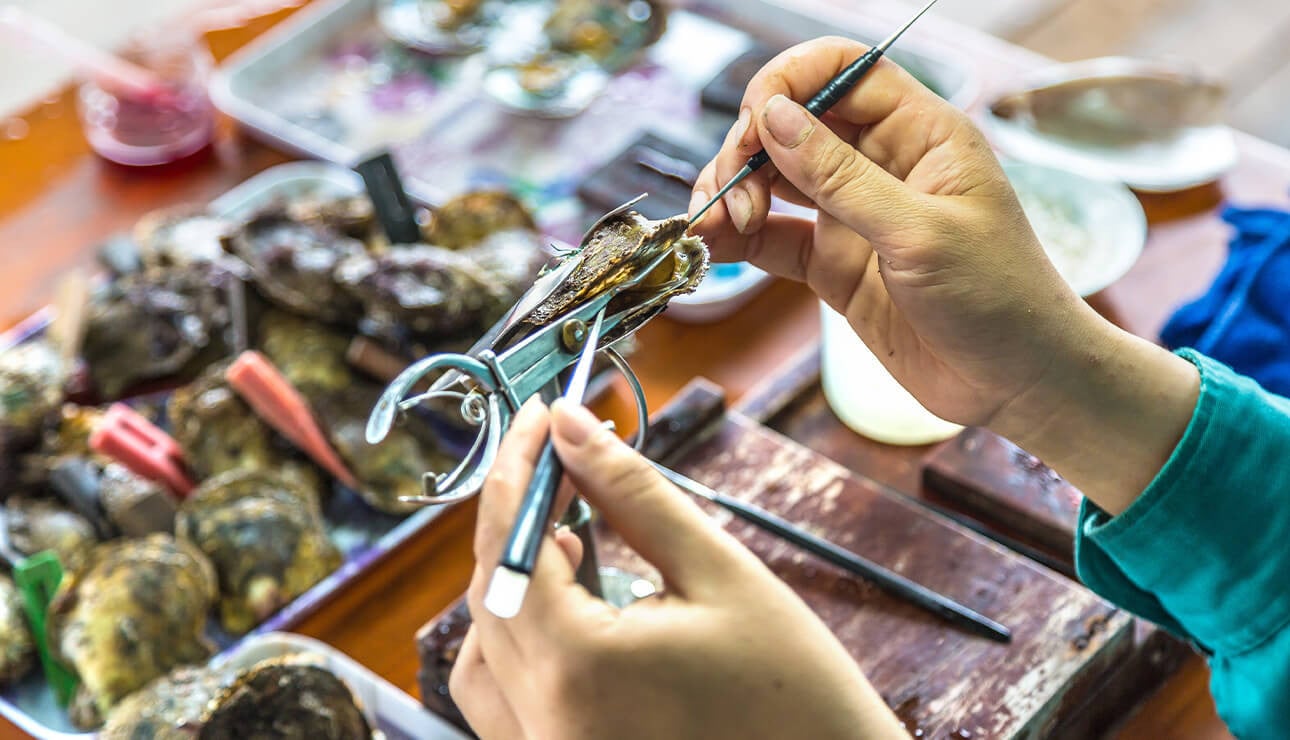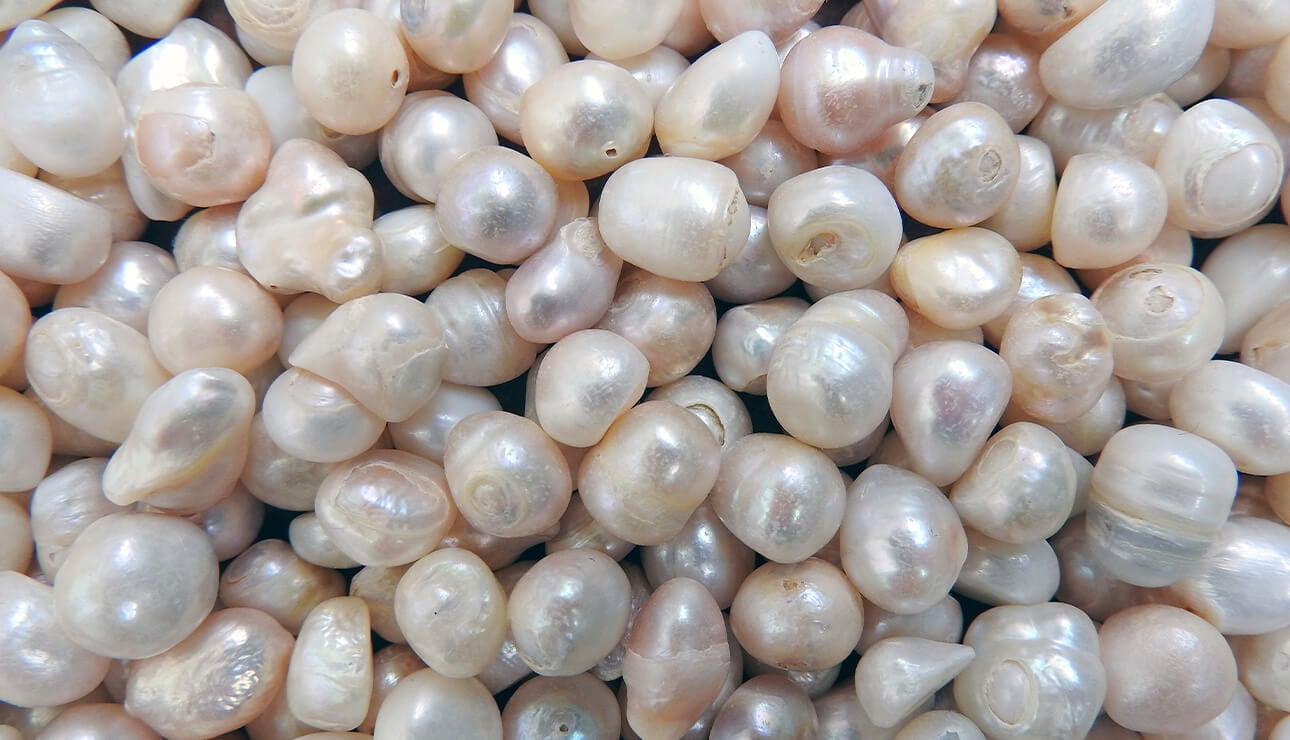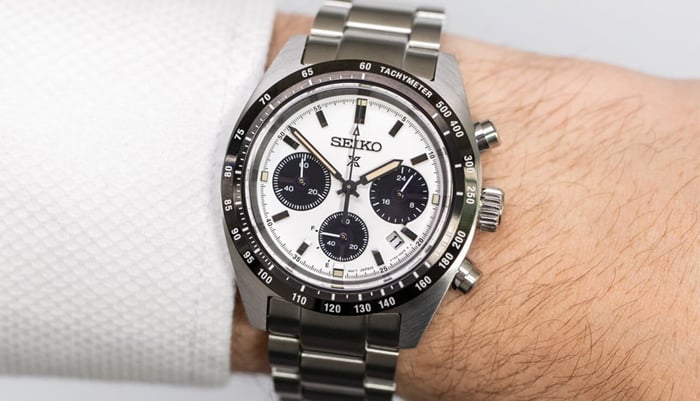You have probably heard of lab grown diamonds and created gemstones like rubies and emeralds, but have you heard of cultured pearls? Maybe you have heard the term in passing without fully understanding what it means, or maybe you are in the market for pearl jewellery, and are undergoing some research before you commit to the purchase then you have come to the right place!
What are cultured pearls? And what is the difference between cultured pearls and natural pearls? We answer all of your questions and round up some of our favourite pearl pieces for you to discover.
Overview:
- What is a cultured pearl
- Cultured freshwater pearls vs freshwater pearls
- Our favourite pearl jewellery
What is a cultured pearl
A cultured pearl is a type of pearl that is grown by a mollusk ( usually an oyster or a mussel) with the help and intervention of humans. Cultured pearls are created by inserting a small piece of tissue or a bead nucleus into the mollusk, causing the mollusk to coat the foreign object with layers of nacre. This mixture of calcium carbonate and conchiolin produces a pearl!
The controlled environment allows for more consistency of the size, shape and quality of the pearls. Cultured pearls are more accessible and uniform than natural pearls - which tend to be rarer but irregular in shape and size.

Even though they are created with the help of humans, cultured pearls are still highly valued for their lustre, beauty and are perfect for making jewellery pieces such as pearl necklaces, pearl earrings, pearl bracelets and pearl rings.
To get a deeper understanding of cultured pearls - let's take a deep dive back in time to the late 19th century. A Japanese man named Kokichi Mikimoto is responsible for developing cultured pearls by experimenting with small beads of mother-of-pearl into the shells of oysters, hoping to create his own pearls. It wasn’t smooth sailing from the beginning though, it took many years of trial and error for his experiments to successfully form a round lustrous pearl.
His discovery truly revolutionised the pearls industry as it allowed for the mass production of pearls that were more consistent in their build than natural pearls. This made them more affordable and available to a wide range of people, hence, the demand for pearls skyrocketed.

Cultured freshwater pearls vs freshwater pearls
While cultured freshwater pearls and freshwater pearls are often used interchangeably, there is a difference between the two that you might not realise. Freshwater pearls are formed naturally in freshwater mussels, and are created purely by chance. These types of pearls have a variety of different shapes and sizes, which makes them harder to use for jewellery. They also come in many different colours such as white, pink, peach, lavender and other pastels which are really beautiful.
On the other hand, cultured pearls are created by human intervention by mimicking this natural process in a controlled environment. The main difference between the two diverts at their origin, where cultured pearls experience human intervention and natural pearls do not. Cultured pearls offer more uniform features, while they lack the rarity factor of natural pearls. This also makes cultured pearls more affordable then natural pearls, perfect for those on a budget.
Cultured pearls are also considered a more environmentally friendly option by some as they do not involve the depletion of wild oyster populations. However, like any industry, the production of cultured pearls come with its own set of environmental impacts that are important to consider such as introducing non-native species.

Our favourite pearl jewellery
9ct Yellow Gold 6.5mm Cultured Pearl Ring

$434.00
$934.00
A smooth, glossy cultured pearl set in a rich golden bezel. This luxury ring is elegant, simple and pure beauty. Wear this treasure on the most special occasions, and draw glances and compliments all night long.… read more
There is not one type of pearl that is more or less valuable than the other, their value is dependent on the individual and your own preferences. While some love the sentimental value and rarity of natural freshwater pearls, others prefer the look and feel of cultured pearls. So, when shopping for your next pearl piece, consider what is important to you, and how to best achieve your desired look.












